Important: Before starting any new exercise program, always consult your healthcare provider, especially if you have medical conditions or have not been active for a while.
Let’s be honest. Not every senior wants to run a marathon or master advanced yoga poses. Your knees might ache, or you might get winded climbing stairs. Maybe the gym feels intimidating or out of reach. The good news is that staying active after 65 does not require any of that.
It simply means finding movement that fits your lifestyle, keeps your body strong, and helps you feel better. This guide will show you simple, practical, and effective exercises for seniors that really make a difference.
Why Exercise Matters More Than Ever After 65
Physical activity is one of the most powerful ways to maintain independence and quality of life as you age. It is not about losing weight or keeping up with trends. It is about being able to do what you love with confidence.
Regular physical activity can help you live independently, have a better quality of life, and prevent or manage chronic disease. Regular exercise for seniors can:
- Improve sleep quality and energy levels
- Support heart health and healthy blood pressure
- Reduce anxiety and boost mood
- Prevent or manage chronic conditions like diabetes, dementia, and arthritis
- Lower the risk of falls and injuries
- Extend life expectancy and vitality
Think about the everyday moments that bring you joy. Playing with grandchildren, gardening, or walking to the store without exhaustion. Staying active helps you keep those experiences possible.
Senior Exercise Guidelines: How Much Activity Do You Really Need?
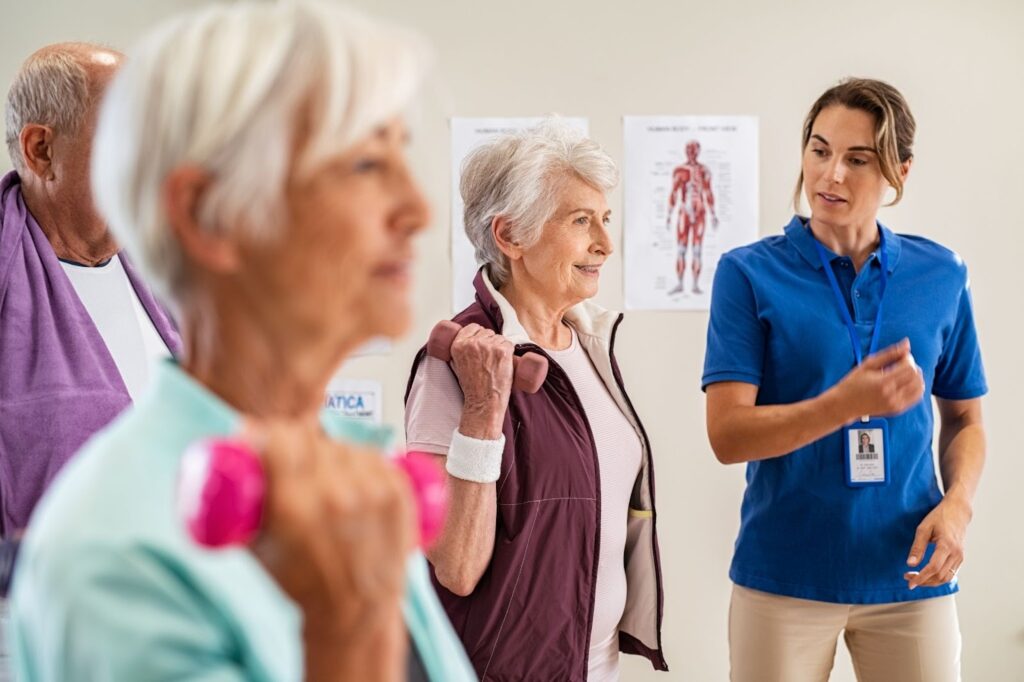
You might have heard that you need to exercise for hours each day, but that’s not true. If you are 65 or older, you need aerobic, muscle-strengthening, and balance activities each week. Specifically, adults 65 and older need at least 150 minutes of physical activity weekly, including activity to strengthen muscles and improve balance.
That equals:
- 30 minutes a day, 5 days a week, or
- 50 minutes a day, 3 days a week, or
- Several shorter sessions, such as three 10-minute walks
Moderate intensity means your heart rate goes up a little and you may sweat lightly, but you can still hold a conversation. If you cannot talk comfortably, you are working too hard.
Starting Where You Are: Gentle Beginnings Matter

If you have not exercised in years or ever, that is perfectly fine. The key is to start small and progress gradually.
Try this simple approach:
- Begin with short, easy movements
- Add time or repetitions each week
- Focus on being consistent
Remember that some movement is always better than none. Every step forward counts.
Walking for Seniors: The Easiest Exercise That Works
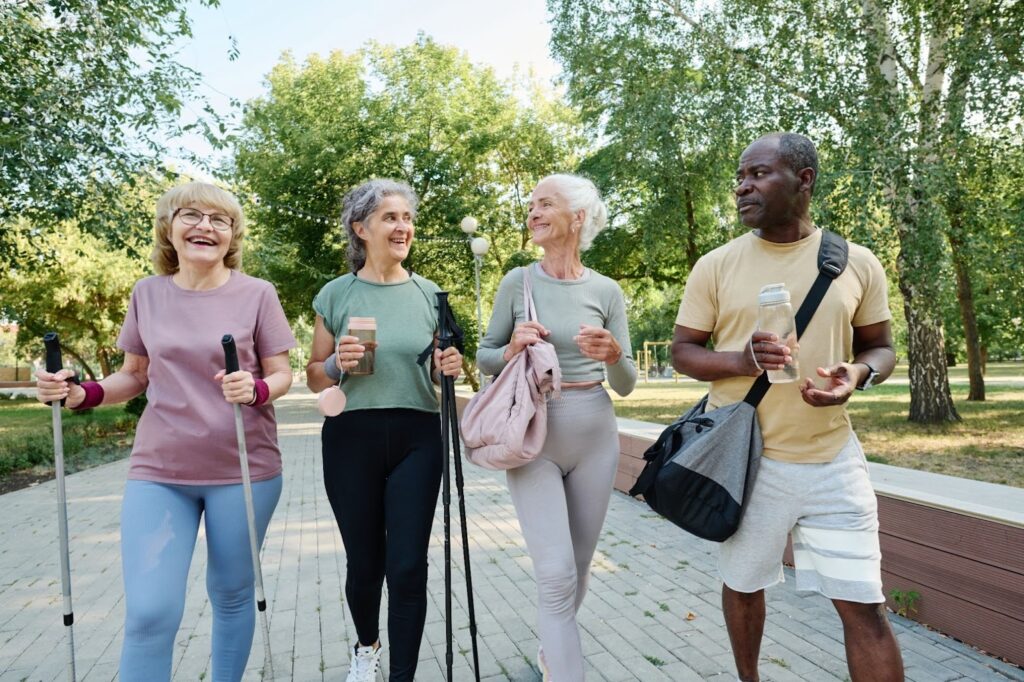
Walking is one of the most effective and accessible exercises for older adults. It strengthens muscles, supports heart health, and boosts mood.
Tips for getting started:
- Walk during the time of day when you feel most energetic
- Choose routes with benches or resting spots
- Invite a friend or family member for company
- Walk indoors at a mall if the weather is poor
- Use a cane or walking stick for stability if needed
Start with what feels comfortable, even five minutes. Over time, you can increase your distance or pace as you feel stronger.
Chair Exercises for Seniors: Safe and Effective Workouts at Home

If balance is a concern or if you’re not ready for standing exercises, chair exercises are incredibly effective. Chair exercises can boost strength, flexibility, and stamina while keeping you safely seated.
Try these simple movements:
- Seated Marching: Sit tall and lift one knee, then the other, alternating slowly.
- Arm Circles: Extend arms to the sides and make small forward and backward circles.
- Ankle Rotations: Lift one foot and gently rotate your ankle in circles.
- Toe Taps: Keep heels on the ground and lift your toes toward your shins.
You can do these exercises while watching TV or listening to music. The goal is consistency, not intensity.
Balance Exercises for Seniors: Preventing Falls and Building Stability

Falls are a serious concern for older adults, but exercises that focus on balance and strength training can reduce the risk of falling. Balance exercises don’t have to be complicated or scary.
Easy balance exercises to try:
- Stand on One Foot: Hold onto a sturdy chair, lift one foot, and balance for a few seconds.
- Heel-to-Toe Walk: Place one foot directly in front of the other, heel to toe, and take 10 to 15 steps.
- Weight Shifts: Stand with feet hip-width apart and shift your weight from one side to the other.
Always perform balance exercises near a stable surface you can grab for support. Safety comes first.
Strength Training for Seniors: Building Muscle at Any Age

Strength training is not just for athletes. It is one of the best ways to maintain muscle, bone density, and overall strength as you age.
You can use:
- Your body weight for wall push-ups or squats
- Household items like canned goods or water bottles
- Resistance bands
- Light dumbbells if available
Examples of strength exercises:
- Sit-to-stand from a sturdy chair
- Wall push-ups
- Bicep curls with light weights or cans
- Standing leg lifts while holding onto a counter
Start with one set of 8 to 10 repetitions and slowly add more as you build strength.
Stretching and Flexibility Exercises for Seniors
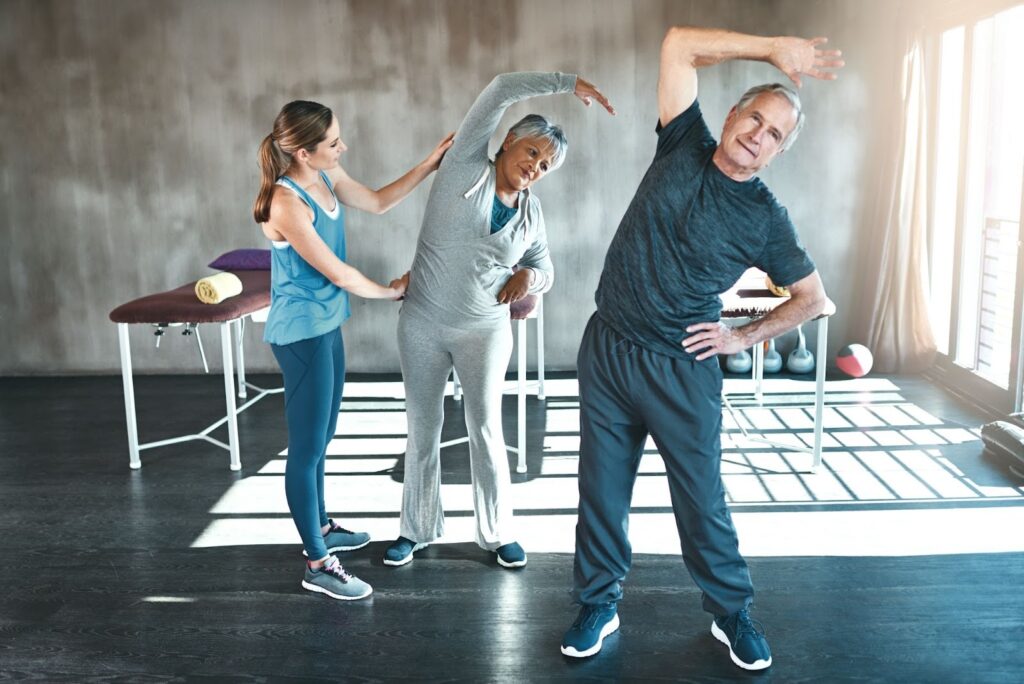
Flexibility helps you move comfortably and complete daily tasks such as bending or reaching.
Simple stretches to include:
- Shoulder rolls (forward and backward)
- Neck tilts (side to side)
- Seated hamstring stretch (extend one leg and reach gently toward your toes)
- Ankle flex and point
Hold each stretch for 15 to 30 seconds. Avoid bouncing or straining. Stretching should feel gentle and soothing.
How to Make Exercise a Daily Habit After 65
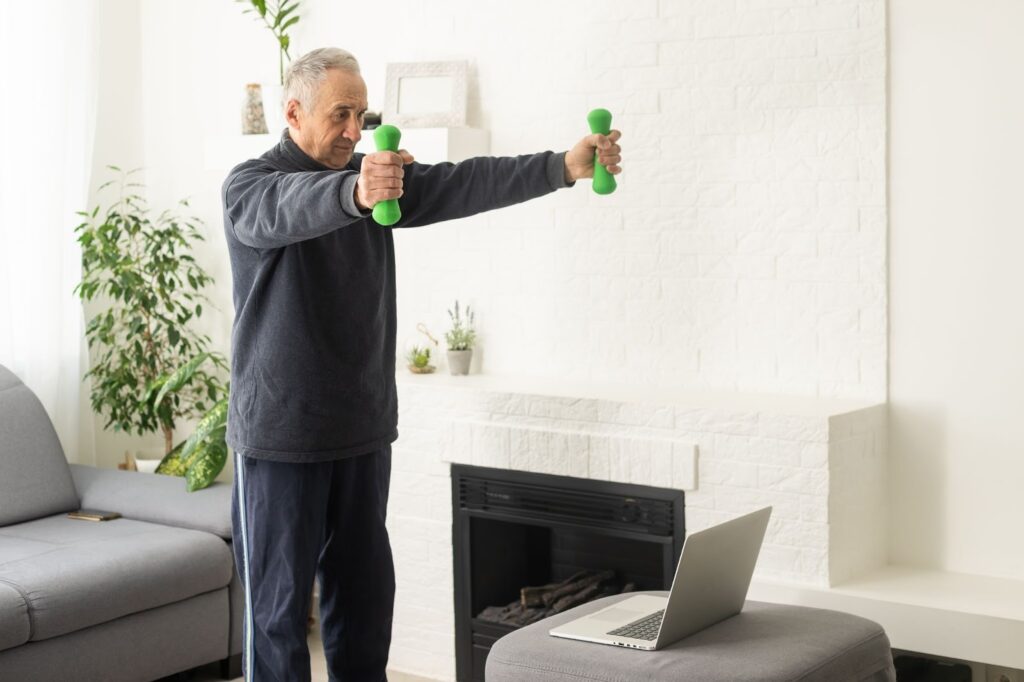
Consistency is the most important part of staying active. Here are a few ways to make exercise part of your everyday routine:
- Choose a consistent time each day
- Start small and build up slowly
- Pick activities you genuinely enjoy
- Keep a simple progress calendar
- Exercise with a friend or join a class
- Be patient and forgiving with yourself
Over time, movement will become a natural and rewarding part of your life.
Managing Health So You Can Stay Active
Managing multiple medications or health conditions can make it harder to focus on exercise. Simplifying other areas of your health routine can help.
For example, Senior Life Pharmacy offers pre-sorted medications delivered to your door. That means fewer pharmacy trips and more time for walking or stretching. When your daily routines are easier, you can dedicate more energy to staying active.

Listen to Your Body and Stay Safe
Mild soreness is normal when you begin exercising. Pain, dizziness, or chest discomfort are not. Stop immediately and speak with your doctor if you experience these symptoms.
Modify or replace any exercise that causes pain. There is always an alternative that works just as well.
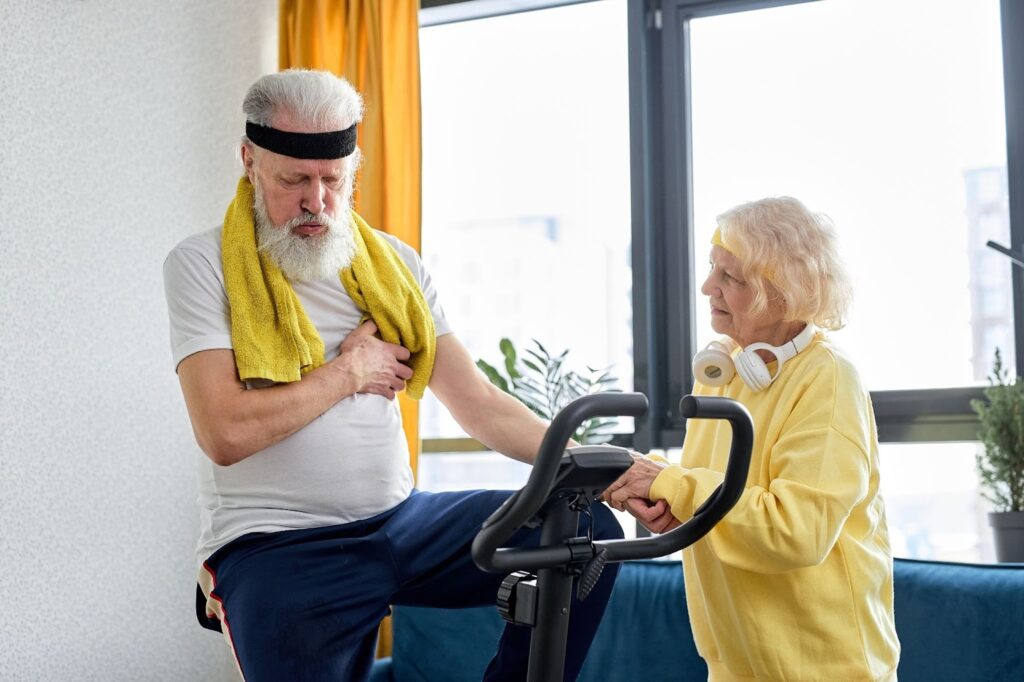
Staying Active After 65: Start Today!
Staying active after 65 is not about perfection or comparison. It is about keeping your body capable and your spirit strong.
Start where you are. Move in ways that feel good. Build gradually and stay consistent. Every step, stretch, and lift is an investment in your future health and independence.
Even a short walk or a few chair exercises count. Each time you move, you are choosing strength, vitality, and a better tomorrow.






